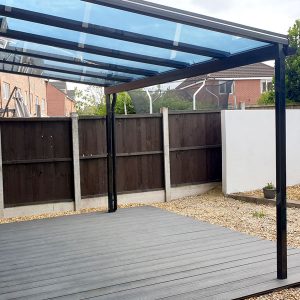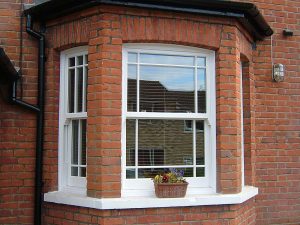Fascia boards, especially when made of wood, require regular maintenance to protect your roof and guttering system. Wooden fascia can rot, warp, or deteriorate over time, leaving your home vulnerable to moisture damage. Replacing wooden fascia with uPVC fascia offers a longer-lasting solution that reduces maintenance and provides better durability. But how often should you replace fascia, especially when switching from wood to uPVC?
Wooden Fascia Requires Frequent Replacement
Wooden fascia, while traditional and aesthetically pleasing, doesn’t last as long as modern materials like uPVC. Exposure to weather, moisture, and pests can cause wooden fascia to rot or warp, making replacement necessary. You typically need to replace wooden fascia every 10 to 15 years, depending on factors like climate, exposure, and maintenance.
Signs Wooden Fascia Needs Replacement
Check your wooden fascia regularly for signs of damage. Look for peeling paint, warping, cracks, or rotting wood. If you notice significant wear, such as soft spots or mold growth, plan to replace the fascia before it causes structural damage to your roofline.
Regular Maintenance Doesn’t Eliminate the Need for Replacement
Even with regular painting and sealing, wooden fascia will eventually deteriorate. While maintenance can extend its life, it cannot prevent eventual replacement. Over time, exposure to rain, snow, and sun degrades the wood, making periodic replacement inevitable.
uPVC Fascia Lasts Longer with Minimal Maintenance
Switching to uPVC fascia significantly extends the lifespan of your fascia boards. Unlike wood, uPVC doesn’t rot, warp, or suffer from moisture damage. You can expect uPVC fascia to last 20 to 30 years or longer with minimal upkeep, making it a cost-effective and long-lasting solution for homeowners.
Why Choose uPVC Fascia?
uPVC fascia offers several advantages over wood. It resists weathering, doesn’t require repainting, and remains unaffected by rot or pests. You only need to clean it occasionally to remove dirt and debris. With uPVC, you reduce the need for frequent replacements and cut down on maintenance costs over time.
Durability of uPVC Fascia
uPVC fascia boards maintain their appearance and structural integrity for decades. While extreme weather or accidental damage might necessitate repairs, uPVC generally stays in good condition much longer than wood. This durability makes it a popular choice for homeowners looking to upgrade their fascia.
Signs You Should Replace Fascia
Regardless of the material, inspect your fascia regularly to identify signs of damage. Wooden fascia requires more frequent inspections, but even uPVC needs checking to ensure it performs effectively. Look for sagging, cracked, or broken fascia, as these indicate the need for replacement.
Gutter Problems
Issues with gutters often signal fascia problems. If your gutters start to sag, detach from the house, or leak, the fascia may no longer provide proper support. Damaged fascia can compromise the effectiveness of the guttering system, leading to water damage around your home’s foundation.
Visible Damage
Any visible damage, whether to wooden or uPVC fascia, requires immediate attention. Cracks, warping, and discoloration all point to compromised fascia. In wooden fascia, this often results from moisture or pest damage, while in uPVC, it could stem from impact or prolonged exposure to extreme conditions.
Consider Replacing Wooden Fascia with uPVC
If your wooden fascia shows signs of age or damage, consider replacing it with uPVC. This switch offers long-term benefits, including reduced maintenance and extended lifespan. Replacing wooden fascia with uPVC not only improves the look of your home but also increases protection against weathering and decay.
When to Replace Wooden Fascia with uPVC
Replace wooden fascia with uPVC when the wood begins to rot, warp, or show signs of significant wear. Typically, after 10 to 15 years of service, wooden fascia may need replacement. Rather than replacing it with new wood, upgrade to uPVC to reduce future upkeep and enjoy a more durable material.
Conclusion
You should replace wooden fascia every 10 to 15 years, depending on its condition and exposure to the elements. Regular maintenance helps prolong its life, but eventually, it will need replacing. Consider switching to uPVC fascia for a longer-lasting, low-maintenance option that can last 20 to 30 years or more. Keep an eye on your fascia’s condition to know when it’s time for an upgrade and ensure your home stays protected for the long term.












